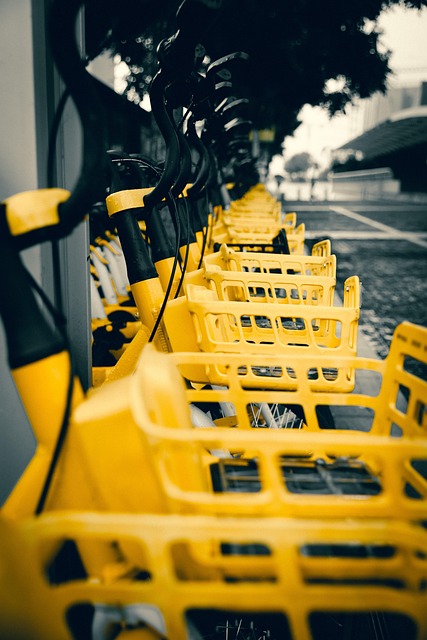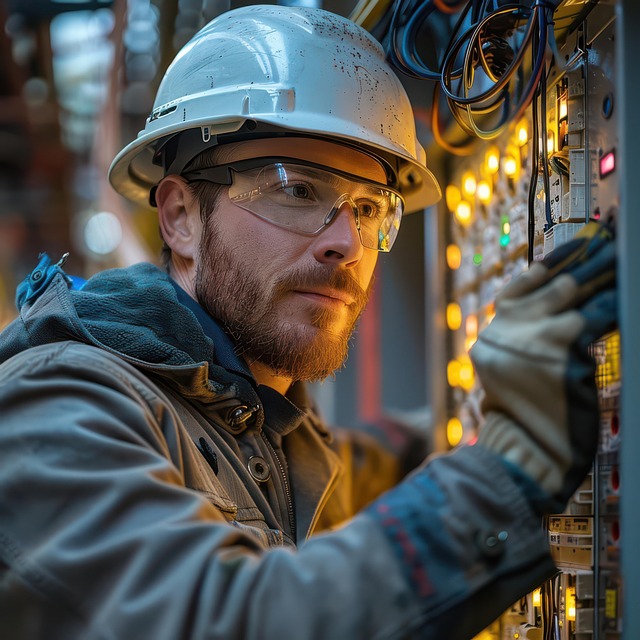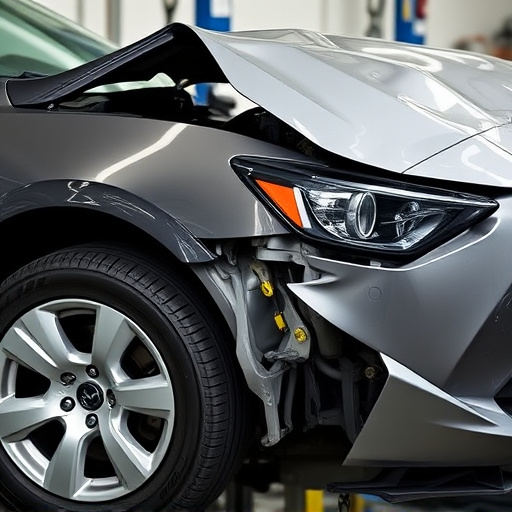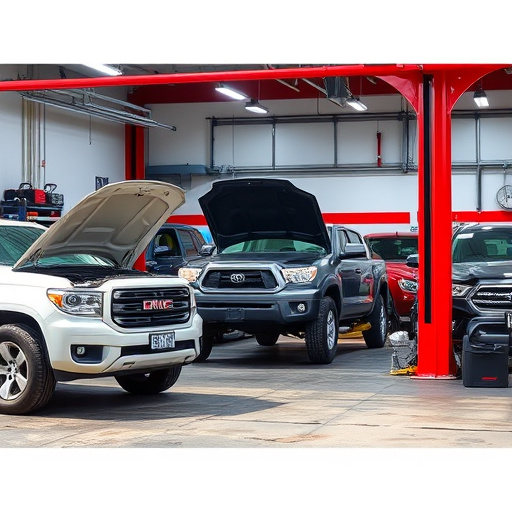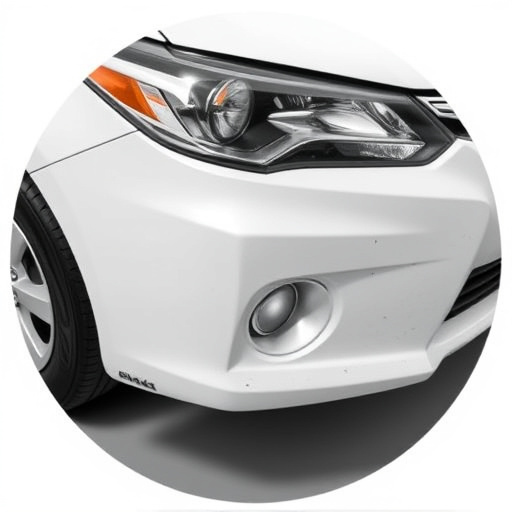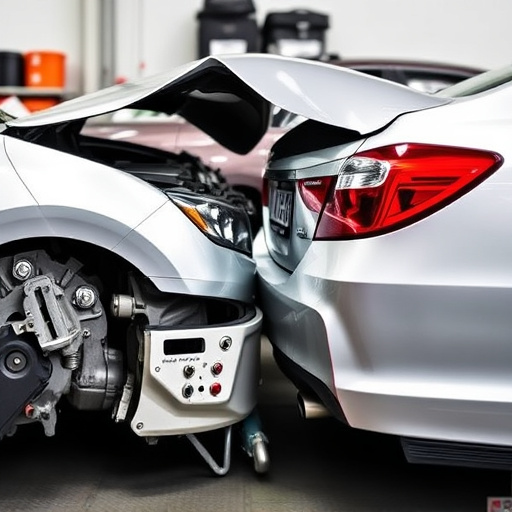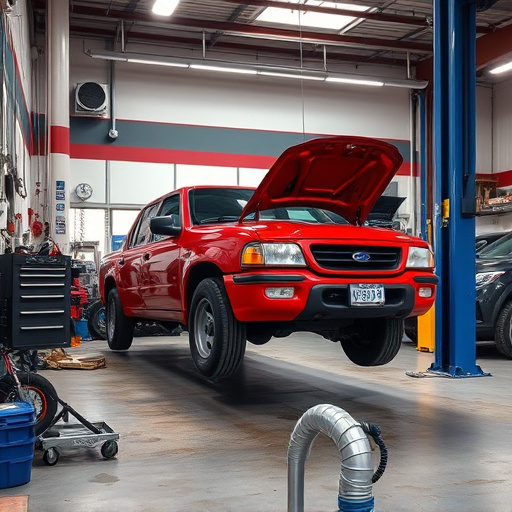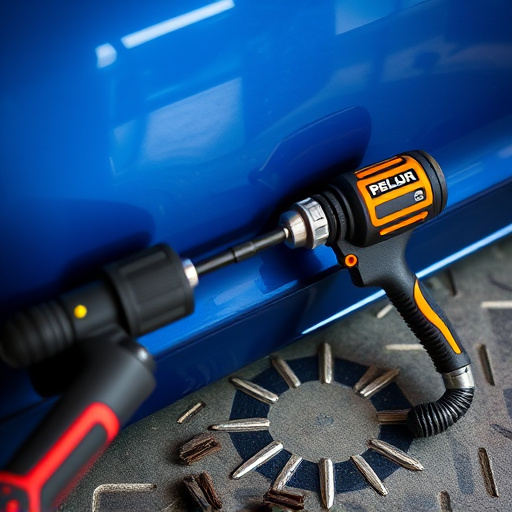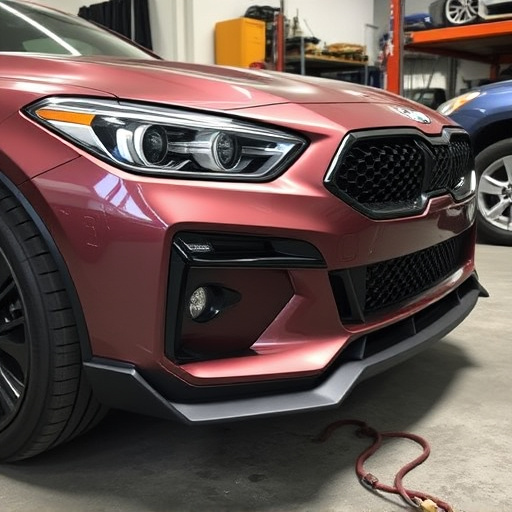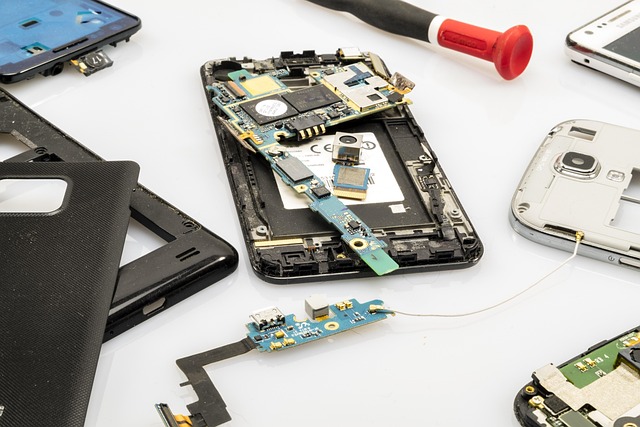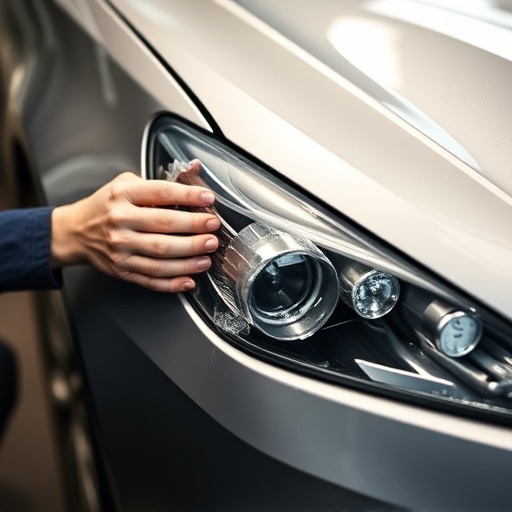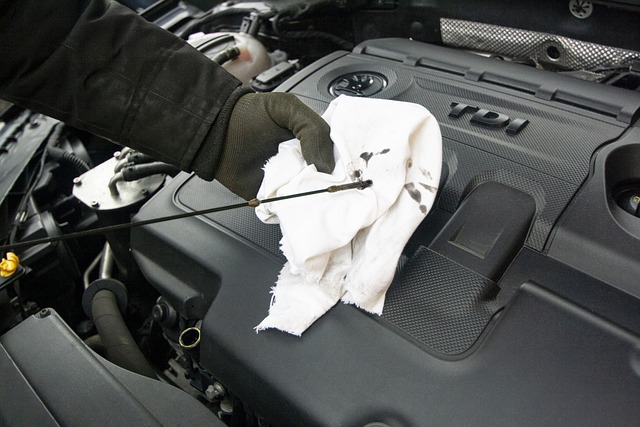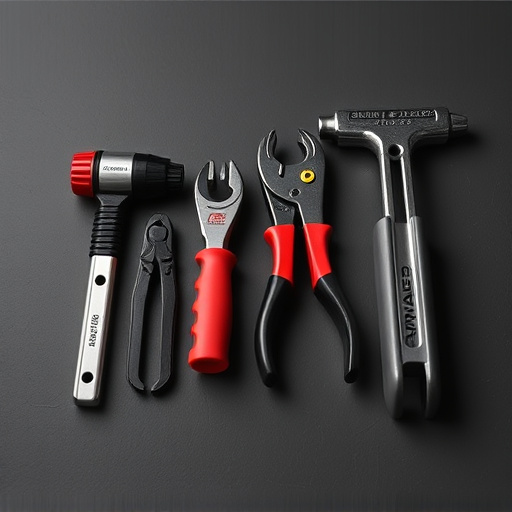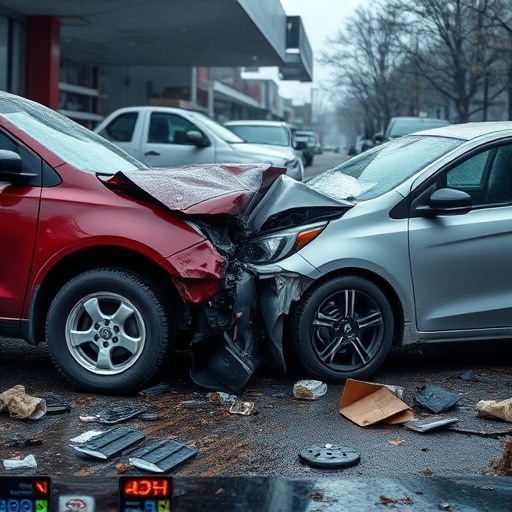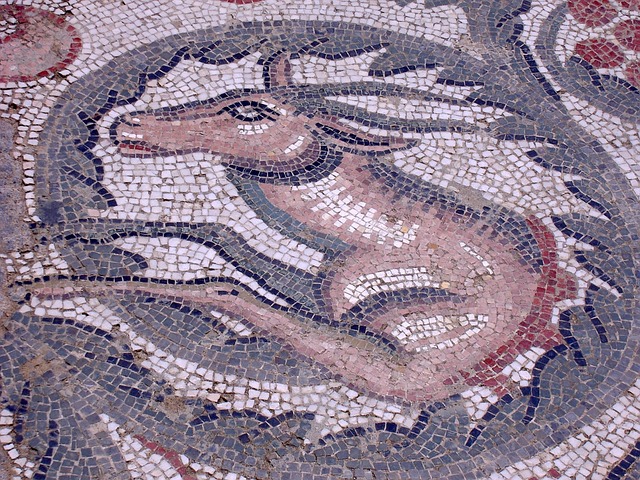Metallic paint damage on vehicles ranges from minor to severe issues, caused by wear and tear, weather, and collisions. Professional repair involves precise tools, techniques, and high-quality paints for optimal results. Skilled technicians use frame straightening and specialized metallic paints to restore original aesthetics and prevent future damage, ensuring a seamless, vibrant finish that commands attention on the road.
In today’s digital era, metallic paint repairs have become a common requirement across various industries. From automotive to architectural, understanding and addressing metallic paint damage promptly is paramount. This article delves into the intricacies of metallic paint repair work, exploring damage causes, essential tools and techniques, while emphasizing achieving a professional finish that ensures longevity. By mastering these aspects, professionals can deliver top-tier results.
- Understanding Metallic Paint Damage and Causes
- Tools and Techniques for Repair
- Achieving a Professional Finish and Longevity
Understanding Metallic Paint Damage and Causes
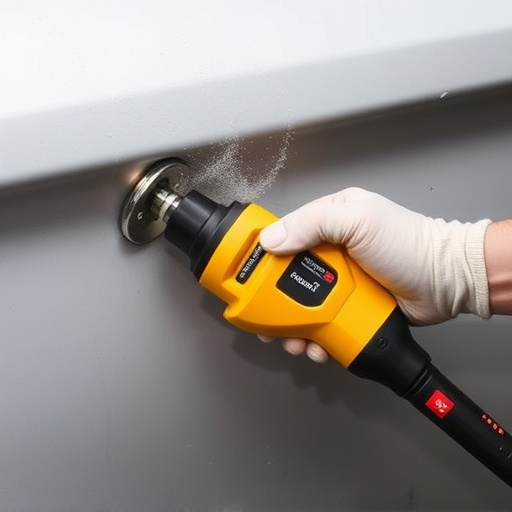
Metallic paint damage can manifest in various forms, from minor scratches and chips to more severe dents and rust spots. Understanding the causes behind these issues is paramount in effective metallic paint repair. One common cause is everyday wear and tear, such as minor scrapes from car washes or stone chips during driving. Environmental factors play a significant role too; exposure to harsh weather conditions, including ultraviolet rays and varying temperatures, can degrade the paint’s quality over time.
Another frequent culprit is collision damage, whether from minor fender benders or more severe accidents. These incidents can leave behind visible dents, scratches, or even large areas of missing paint, requiring professional attention for proper auto painting and bumper repair. Additionally, poor initial painting techniques or subpar paint quality can contribute to early deterioration, underscoring the importance of skilled metallic paint repair experts in addressing these issues effectively.
Tools and Techniques for Repair
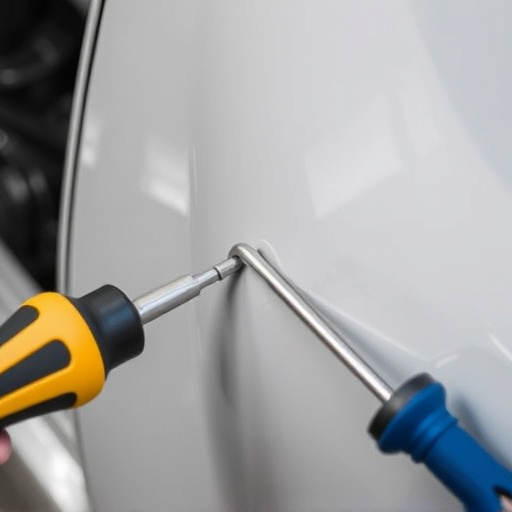
When it comes to metallic paint repair, professionals rely on a combination of specialized tools and advanced techniques to ensure optimal results. One of the primary tools used is a precision knife or scraper, which allows for careful removal of damaged or faded paint layers without affecting the underlying metal. This initial step is crucial in preparing the surface for subsequent repairs.
Additionally, sandpaper with progressively finer grits is employed to smoothen rough edges and create an even surface. This process, known as sanding, is a critical stage in achieving a seamless finish. After sanding, professionals often use putty knives to apply a thin layer of filler to any remaining imperfections, followed by careful painting using high-quality metallic paint. This meticulous approach ensures that the repaired area blends seamlessly with the rest of the vehicle’s body, effectively hiding any signs of collision damage repair or automotive body work. In fleet repair services, maintaining this level of precision is paramount for maintaining consistency and aesthetic appeal across all vehicles.
Achieving a Professional Finish and Longevity
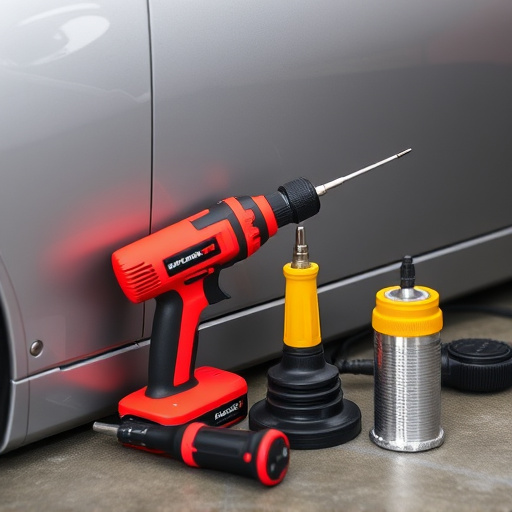
Achieving a professional finish and longevity in metallic paint repair is paramount for any auto collision center or car dent repair specialist. It’s not just about fixing the visible damage; it’s about restoring the vehicle to its original, gleaming state. Skilled professionals employ precise techniques, such as frame straightening, to ensure the metal is perfectly aligned before applying a new coat of metallic paint. This meticulous approach prevents future issues like rust or unevenness that can compromise the aesthetics and value of the vehicle.
The use of high-quality paints and advanced equipment further enhances durability. Professionals choose metallic paints designed to resist fading, chipping, and cracking, ensuring the repair work stands the test of time. Unlike DIY solutions or less experienced repairs, a professional job guarantees a seamless blend with the existing paintwork, creating an indistinguishable, vibrant finish that commands attention on the road—a true testament to their expertise in auto collision centers.
Professionals approach metallic paint repair with a meticulous understanding of damage causes, utilizing advanced tools and techniques. By mastering these skills, they ensure not only a seamless fix but also longevity for the repaired surface, preserving its original aesthetics. This expert handling of metallic paint repair work is a testament to their commitment to quality and customer satisfaction.
